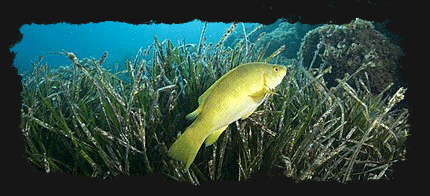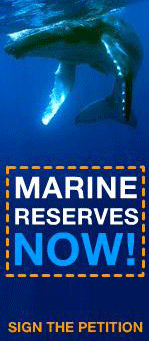What is sustainable...?

In simple terms, a sustainable fishery is one whose practices can be maintained indefinitely without reducing the targeted species' ability to maintain its population at healthy levels, and without adversely impacting on other species within the ecosystem − including humans − by removing their food source, accidentally killing them, or damaging their physical environment.
Then what sustainable fishery looks like?
- Is managed in a way that considers all marine life in an ecosystem.
This is known as management from an ‘ecosystem perspective’. There is very little point in trying to maintain the stock levels of a single fish species if at the same time we allow fishing to damage to its (or other species’) habitats, or destroy its food sources or the other species that it relies on. Put simply, a healthy ecosystem is essential to maintaining a healthy source of fish. Read more - Helps to protect sensitive marine species, and vulnerable habitats.
Sensitive habitats include those that contain unique species and / or are species that are particularly vulnerable to human impacts. These include important breeding areas or nursery grounds for young fish, and areas that contain species that are already under threat. Sensitive areas must be given the strongest protection possible from the impacts of fishing. Sustainable fisheries support this by following all the regulations that apply to them. Read more - Maintains the stocks of all target species at a healthy level.
Sustainable fisheries only take a small percentage of the overall fish stock. This allows stocks to be maintained at plentiful levels, and considers both human use of those stocks and the ecosystem as a whole. For many already overfished and depleted stocks this means taking no fish, or significantly reduced levels of particular fish species, until stocks return to healthy levels. A fishery has a far greater chance of survival if it takes a small proportion of large healthy stocks, rather than a large proportion of a small, unhealthy stock. Read more - Uses a selective fishing method that does not destroy the marine habitats.
Sustainable fisheries take every precaution to only catch the species they are targeting. They only use fishing methods that are suitable for the marine habitats in which they operate, and never use methods that permanently damage the sea bed; they also avoid breeding grounds and areas containing young fish, or which are home to endangered or protected species. If accidental catch becomes a problem in an area, they stop fishing there. Read more - Maintains the biodiversity associated with the fishery.
Food chains in the ocean are not linear, but rather operate as complex webs. This means that taking too much of one species can sometimes have unexpected consequences for other species in the food web. Sustainable fisheries regularly monitor ecosystem impacts to prevent substantial ecosystem changes. Read more - Protects the ocean through energy efficient operations and minimising chemical use and waste production.
Climate change and pollution have devastating effects on ocean life. Climate change warms the oceans and changes important chemical processes. Pollution poisons and chokes marine life. Sustainable fisheries are energy efficient and minimise chemical use and waste production. They work to ensure that they leave nothing in the sea that should not be there, and that all materials for fishing, storage and transport of catches are returned to land and re-used, recycled or reprocessed in an environmentally responsible manner. Read more - Operates in a socially, and economically, fair and responsible manner so it does not negatively impact on other people.
It is also important to consider the impacts of fisheries on people. Illegal, Unregulated and Unreported (IUU), or pirate fishing is a huge problem. It steals much needed food sources from their rightful owners and undermines responsible fisheries management. Sustainable fisheries operate under local, national and international laws and regulations. This includes reporting any IUU practices they witness during fishing operations to the relevant authorities; and, where possible, providing financial assistance for monitoring, control and surveillance to help poorer nations ensure regulations and management plans are enforced. Sustainable fisheries look after the people they employ, they respect human rights and labour laws, pay fair wages and take care of their employees’ health and welfare. Sustainable fisheries also take care of people who may be impacted by the fishing of their waters. This includes ensuring that fishing access agreements are fair, and that all stakeholders, particularly local communities who depend on fishing for food and livelihoods, are involved in management decisions. Read more - Provides full traceability for all the fish it sells, from point of capture to the market, so that it can be easily identified as sustainable by customers.
We all want to buy sustainable fish. To do this we need to know exactly where the fish we buy is from, and how it was caught. Good traceability combined with clear labelling is key to stopping unsustainably caught fish and illegally caught fish getting on to the market. Read more
The Greenpeace criteria for sustainable fisheries are based on the FAO Code of Conduct for Responsible Fisheries. In 2002, at the World Summit on Sustainable Development, world governments agreed to implement the FAO Code of Conduct for Responsible Fisheries with the goal of restoring global fish stocks by 2015.





